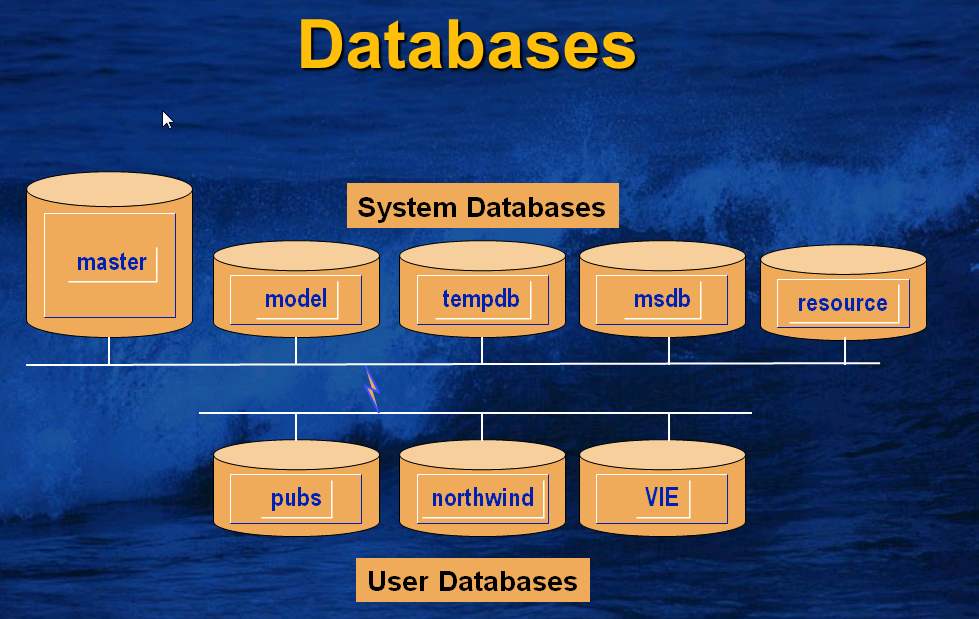正好最近在帮客户从达梦数据库迁移到 Mysql。我也来简单说说重复数据的处理。 存放在数据库中的数据分为三种: 一种是经过严格意义过滤出来的数据。比如程序端过滤数据源、数据库端在表字段上设置 check 标记过滤数据源、设置触发器过滤、

正好最近在帮客户从达梦数据库迁移到 Mysql。我也来简单说说重复数据的处理。
存放在数据库中的数据分为三种:
比如无主键的表 d1
mysql-(ytt/3305)->show create table d1G
*************************** 1. row ***************************
Table: d1
Create Table: CREATE TABLE `d1` (
`r1` int(11) DEFAULT NULL,
`r2` int(11) DEFAULT NULL
) ENGINE=InnoDB DEFAULT CHARSET=utf8mb4 COLLATE=utf8mb4_0900_ai_ci
1 row in set (0.00 sec)
记录数总共为四百万。
mysql-(ytt/3305)->select count(*) from d1 limit 2;
+----------+
| count(*) |
+----------+
| 4000000 |
+----------+
1 row in set (0.18 sec)
可以看到足足有四分之三的记录是重复的。
mysql-(ytt/3305)->select count(distinct r1,r2) from d1 ;
+-----------------------+
| count(distinct r1,r2) |
+-----------------------+
| 1000000 |
+-----------------------+
1 row in set (2.68 sec)
比如记录(1,1)就有四条。
mysql-(ytt/3305)-> select * from db1 order by r1,r2 limit 5;
+------+------+
| r1 | r2 |
+------+------+
| 1 | 1 |
| 1 | 1 |
| 1 | 1 |
| 1 | 1 |
| 2 | 2 |
+------+------+
5 rows in set (1.65 sec)
这种去重非常简单,要么在数据库层做,要么把数据导出来筛选好在导到数据库里来。
在数据库里做,无非就是新建一张克隆表,完了把正常数据筛选出来,再重新命名后,删掉原来的表,步骤也不是非常繁琐,例子如下:
mysql-(ytt/3305)->create table d2 like d1;
Query OK, 0 rows affected (0.01 sec)
时间主要耗费在去重并且插入新表这里
mysql-(ytt/3305)->insert into d2 select distinct r1,r2 from d1;
Query OK, 1000000 rows affected (19.40 sec)
Records: 1000000 Duplicates: 0 Warnings: 0
mysql-(ytt/3305)->alter table d1 rename to d1_bak;
Query OK, 0 rows affected (0.00 sec)
mysql-(ytt/3305)->alter table d2 rename to d1;
Query OK, 0 rows affected (0.00 sec)
mysql-(ytt/3305)->drop table d1_bak;
Query OK, 0 rows affected (0.00 sec)
上面总共花了大概 20 秒的样子,再来看看在系统层面上去重,先导出数据,
mysql-(ytt/3305)->select * from db1 into outfile "/var/lib/mysql-files/d1.txt";
Query OK, 4000000 rows affected (1.84 sec)
系统层面去重,用 OS 自带的工具 sort 和 uniq。
root@ytt-pc:/var/lib/mysql-files# time cat d1.txt |sort -g |uniq > d1_uniq.txt
real 0m7.345s
user 0m7.528s
sys 0m0.272s
导入到原表,
mysql-(ytt/3305)->truncate table d1;
Query OK, 0 rows affected (0.05 sec)
root@ytt-pc:/var/lib/mysql-files# mv d1_uniq.txt d1.txt
把处理好的数据直接导入到数据库
root@ytt-pc:/home/ytt/scripts# time mysqlimport -uytt -pytt -P3305 -h 127.0.0.1 --use-threads=2 -vvv ytt /var/lib/mysql-files/d1.txt
mysqlimport: [Warning] Using a passWord on the command line interface can be insecure.
Connecting to 127.0.0.1
Selecting database ytt
Loading data from SERVER file: /var/lib/mysql-files/d1.txt into d1
ytt.d1: Records: 1000000 Deleted: 0 Skipped: 0 Warnings: 0
Disconnecting from 127.0.0.1
real 0m3.272s
user 0m0.012s
sys 0m0.008s
看下处理好的记录,
mysql-(ytt/3305)->select * from d1 where 1 order by r1,r2 limit 2;
+------+------+
| r1 | r2 |
+------+------+
| 1 | 1 |
| 2 | 2 |
+------+------+
2 rows in set (0.40 sec)
OS 层面稍微效率高些,总体包括数据导出,数据去重,数据导入,差不多是数据库层时间的一半。
举个例子,表 d4 除了加了主键,其他的记录和之前的一模一样。记录如下:
mysql-(ytt/3305)->select * from d4 order by r1,r2 limit 5;
+---------+------+------+
| id | r1 | r2 |
+---------+------+------+
| 1 | 1 | 1 |
| 3000001 | 1 | 1 |
| 2000001 | 1 | 1 |
| 1000001 | 1 | 1 |
| 2 | 2 | 2 |
+---------+------+------+
5 rows in set (1.08 sec)
但是这种一般就得需要和具体的业务商量了,比如我需要留下重复记录的最大主键值,比如上面这个,留下最大的 id 为 3000001 这条记录。这样的去重一条 sql 就搞定了,
mysql-(ytt/3305)->delete a from d4 a left join (select max(id) id from d4 group by r1, r2) b using(id) where b.id is null;
Query OK, 3000000 rows affected (23.29 sec)
去掉了 300W 行重复记录,剩下四分之一的正常数据。
mysql-(ytt/3305)->select count(*) from d4;
+----------+
| count(*) |
+----------+
| 1000000 |
+----------+
1 row in set (0.06 sec)
来看下效果,保留了最大值,其他的删掉了。
mysql-(ytt/3305)->select * from d4 order by r1,r2 limit 5;
+---------+------+------+
| id | r1 | r2 |
+---------+------+------+
| 3000001 | 1 | 1 |
| 3000002 | 2 | 2 |
| 3000003 | 3 | 3 |
| 3000004 | 4 | 4 |
| 3000005 | 5 | 5 |
+---------+------+------+
5 rows in set (0.25 sec)
去掉字段值内前后的空白字符,是这类里最简单的。这种 MySQL 有现成的函数,一条基础的 SQL 即可。
表y11 有500W行示例数据
mysql-(ytt/3305)->select count(*) from y11;
+----------+
| count(*) |
+----------+
| 5242880 |
+----------+
1 row in set (0.30 sec)
利用 trim 函数。
mysql-(ytt/3305)->update y11 set r1 = trim(r1), r2 = trim(r2);
Query OK, 5242880 rows affected (2 min 1.56 sec)
Rows matched: 5242880 Changed: 5242880 Warnings: 0
mysql-(ytt/3305)->select * from y11 limit 5;
+----+------------------------+------------------------+
| id | r1 | r2 |
+----+------------------------+------------------------+
| 1 | SQL Server | sql server |
| 2 | sql server | sql server |
| 3 | sql server | sql server |
| 6 | db2 mysql oracle mysql | db2 mysql oracle mysql |
| 7 | db2 mysql oracle mysql | db2 mysql oracle mysql |
+----+------------------------+------------------------+
5 rows in set (0.00 sec)
去掉单词中间的各种空白字符(空格,换行,制表符等);单词前后,中间都有空格的场景。
依然是表 y11,从结果来看,各种换行符,空格已经让结果无法正常显示了。
mysql-(ytt/3305)->select * from y11 limit 5;
+----+-----------------------------------------------------+------------------------------------------------------+
| id | r1 | r2 |
+----+-----------------------------------------------------+------------------------------------------------------+
| 1 | sql server | sql server |
| 2 | sql server | sql server |
server | sql server |
| mysql | db2 mysql oracle
| 7 | db2 mysql oracle mysql | db2 mysql oracle mysql
+----+-----------------------------------------------------+------------------------------------------------------+
5 rows in set (0.00 sec)
可能最先想到的方法是把数据导出为文本文件,完了用 linux 上的各种工具处理完了再导进去,比如:
mysql-(ytt/3305)->select * from y11 into outfile "/var/lib/mysql-files/y11.txt" fields terminated by "," enclosed by """;
Query OK, 5242880 rows affected (3.54 sec)
mysql-(ytt/3305)->truncate y11;
Query OK, 0 rows affected (0.23 sec)
用 sed 处理下,替换掉所有的空白字符。
root@ytt-pc:/var/lib/mysql-files# time sed -i "s/s+/ /g" y11.txt
real 0m27.476s
user 0m20.105s
sys 0m7.233s
导入到表 y11
mysql-(ytt/3305)->load data infile "/var/lib/mysql-files/y11.txt" into table y11 fields terminated by "," enclosed by """;
Query OK, 5242880 rows affected (30.25 sec)
Records: 5242880 Deleted: 0 Skipped: 0 Warnings: 0
上面虽然达成了目的,但是过程过于繁琐,如果 MySQL 层实在解决不了再考虑。
完全可以利用 MySQL 的正则替换功能直接替换掉多余的字符为一个空格,也是一条简单的 SQL。
mysql-(ytt/3305)->update y11 set r1 = regexp_replace(r1,"[[:space:]]+"," "), r2 = regexp_replace(r2,"[[:space:]]+"," ");
Query OK, 4194304 rows affected (1 min 32.05 sec)
Rows matched: 5242880 Changed: 4194304 Warnings: 0
只是时间上稍微长些,不过也影响不是很大。
mysql-(ytt/3305)->select * from y11 limit 5;
+----+------------------------+-------------------------+
| id | r1 | r2 |
+----+------------------------+-------------------------+
| 1 | sql server | sql server |
| 2 | sql server | sql server |
| 3 | sql server | sql server |
| 6 | db2 mysql oracle mysql | db2 mysql oracle mysql |
| 7 | db2 mysql oracle mysql | db2 mysql oracle mysql |
+----+------------------------+-------------------------+
5 rows in set (0.00 sec)
我想可能日常数据处理难免会有数据去重的场景,希望这部分内容对大家有帮助。
--结束END--
本文标题: 技术分享 | 快速处理 MySQL 重复数据小妙招
本文链接: https://www.lsjlt.com/news/4253.html(转载时请注明来源链接)
有问题或投稿请发送至: 邮箱/279061341@qq.com QQ/279061341
下载Word文档到电脑,方便收藏和打印~
2024-05-10
2024-05-10
2024-05-10
2024-05-10
2024-05-10
2024-05-10
2024-05-10
2024-05-10
2024-05-10
2024-05-10
回答
回答
回答
回答
回答
回答
回答
回答
回答
回答
0